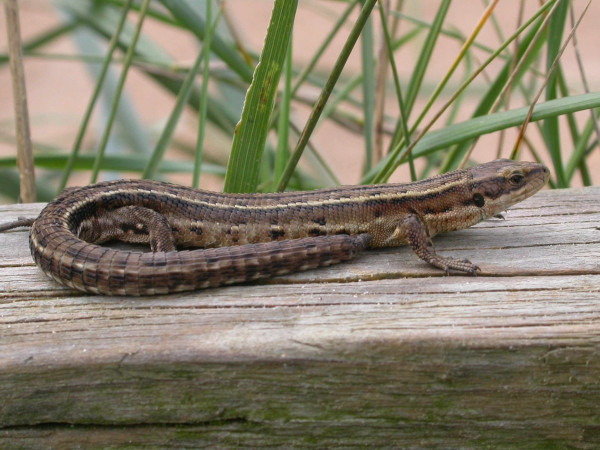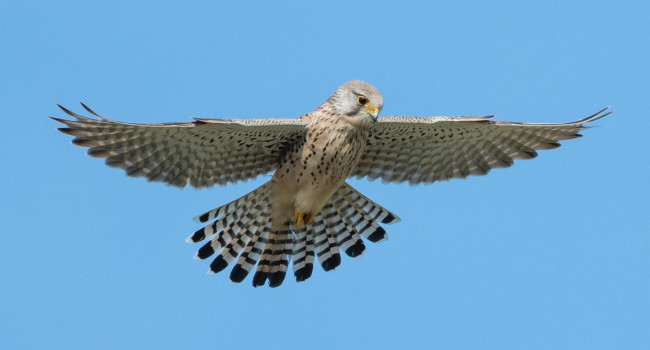Common Lizard

Zootoca vivipara (formerly Lacerta vivipara)
If you see a legged-lizard (as opposed to a Slow-worm) in your garden, it is likely to be a Common Lizard as Sand Lizards (the only other native ‘legged’ species) are very rare and restricted to heathland.
Common Lizards vary in colour, though they are usually dark brown with a complex pattern of lines running the length of the body. Commonly, they have a dark brown stripe running down their back. As a general rule, males are more spotty and females more stripy. Males have yellow/orange mottled undersides, which get brighter during the breeding season, while females are pale.
Common Lizards are found in a variety of habitats including woodland, brownfield sites, heathland and larger gardens. They are diurnal, spending their nights beneath piles of rocks or logs, or in small burrows underground. During the winter, they also hibernate in similar places.
Unfortunately for Common Lizards, they are a popular prey item for predators ranging from cats to hawks to jays. Luckily for Common Lizards, they have a lizard’s way to distract a predator. Common Lizards can shed their tail, which continues to wriggle and keep the predator’s attention, while the lizard escapes.
Common Lizards are protected under the Wildlife and Countryside Act 1981 from intentional killing, injury or sale. As there appears to be a decline in the UK population, Common Lizards are also listed on the UK Biodiversity Action Plan.
Common Lizards mostly breed during April and May. They give birth to an average of seven live young (as opposed to laying eggs like most reptiles).
Common Lizards feed on small invertebrates such as flies, grasshoppers and spiders. They are fast moving and agile and therefore, can catch a range of prey.






Share this page